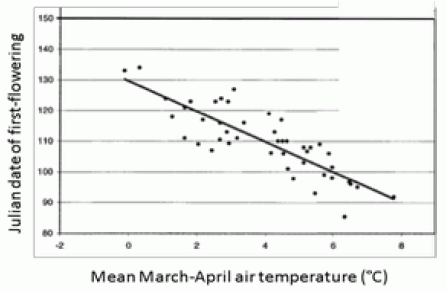| Box 3-3: Approaches to attribution of change (based on Hegerl et al. 2010) An IPCC Expert Meeting convened in 2009 to clear up misunderstandings among different research communities, produced a good practice guidance document (Hegerl et al., 2010) that distinguishes between four methods of attribution commonly referred to in the literature. The first three methods focus on attribution of impacts or climate change to external forcing, including greenhouse gas increases. while the fourth addresses the link between impacts and climate as the main driver.
|
| Box 3-4: Overview of Impact Attribution Theoretical assumption Climate and/or non-climate drivers are responsible for observed impacts. Question addressed Which combination of variables can explain observed impacts on the study unit? Data requirements
Typical result Statistical model explaining observed impacts. Generic steps 1. Select potential explanatory variables based on theory and literature 2. Apply statistical methods |

Figure 3-2: Relationship between mean March-April temperature and flowering dates of Aspen (Populus tremuloides)
during 1936-1998 in the area of Edmonton,
Alberta. Each point represents a single
year. Source: Beaubien and Freeland (2000).
| Sector | Examples |
| Agriculture | Crop responses (Lobell, 2010) Livestock productivity and welfare (Gould et al., 2006; Mellor and Wittmann, 2002) |
| Water Resource |
Groundwater resources (Gemitzi and Stefanopoulos, 2011) Drinking water resources (Kistemann et al., 2002) |
| Health | Mortality associated with extreme weather (Conti et al., 2005; Hajat et al., 2002; Keatinge et al., 2000; Barnett et al., 2005; Zanobetti and Schwartz, 2008) Weather events and disease outbreaks (Wu et al., 2007; Reyburn et al., 2011; Checkley et al., 2000; Singh et al., 2001; Hurtado-Diaz et al., 2007; Keay and Simmonds, 2006) Temporal patterns in the start dates of pollen seasons (Emberlin et al., 2002; van Vliet et al., 2002) |
| Coastal/Marine | Fisheries catch rates (Menard et al., 2007; Corbineau et al., 2008) Marine pelagic phenology (Edwards and Richardson, 2004) Species responses (Beaugrand et al., 2002; Beaugrand and Reid, 2003; Brander, 2005; Dutil and Brander, 2003) |
| Biodiversity | Vegetation dynamics (Herrmann et al., 2005) Phenological events (Schleip et al., 2006) Animal responses (Sandvik and Erikstad, 2008; Chan et al., 2005) |
| Other | Insurance and reinsurance markets (Romilly, 2007; Klawa and Ulbrich, 2003) |
Related decision tree of the Pathfinder:
| Decision tree: Impact analysis |

|